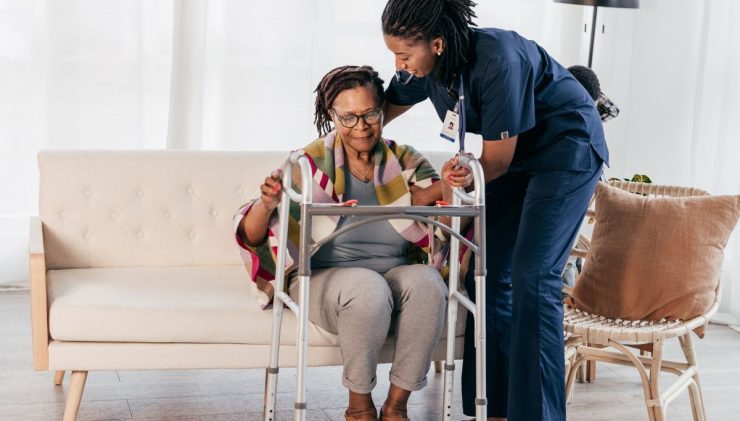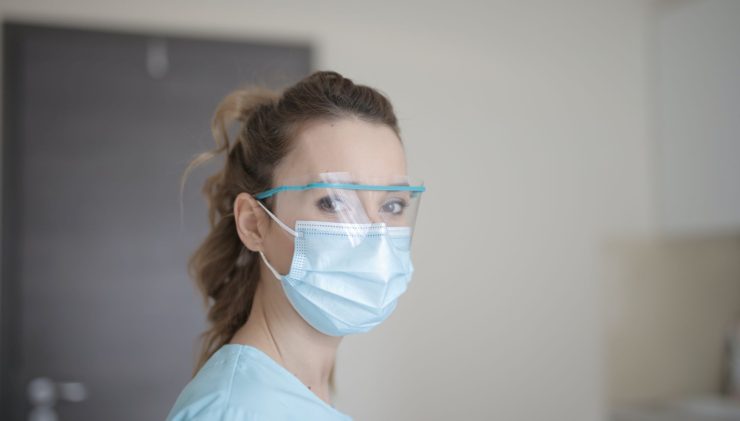 What to Know Before Starting a Home Care Agency
What to Know Before Starting a Home Care AgencyThe COVID-19 pandemic is creating new challenges for home healthcare workers and the patients they serve. Although home healthcare workers provide essential services, they may place themselves at risk every time they go outside to work.
Essential Workers
States across the country have issued stay-at-home orders designed to stop the spread of COVID-19. Although these orders vary by state, they typically order people to stay home except when engaging in essential tasks.
In California, the list of essential workers includes healthcare providers and caregivers, as well as hospital and laboratory personnel and workers in other medical facilities.
Increased Risks
While home healthcare must continue, it must be done in new ways. The threat of COVID-19 is grave – work cannot simply continue as normal.
- Risk to patients: A healthcare worker who is going from home to home may catch the novel coronavirus and spread it to patients – possibly with devastating effects. According to the CDC, older adults and people with serious underlying medical conditions are at higher risk for developing severe illness from COVID-19. This likely includes many of the patients who depend on home healthcare services.
- Risk to employees: Home healthcare workers are at greater risk. According to USA Today, a CDC report indicates that more than 9,000 healthcare workers have contracted COVID-19, and at least 27 have died of the illness.
- Risk to the home health employer: Employers could face medical professional liability claims, employment practices claims, and workers’ compensation claims – all arising from their actions (or lack of action) during this epidemic.
Risk Management Protocols
Now is the time to be proactive and purposeful. Start by reviewing the CDC’s information for healthcare professionals and OSHA’s resources on COVID-19 and sharing them with your team. Make sure that all workers know and have implemented their recommendations.
Next, think carefully about the audiences you need to protect – Your employees, your patients, and your company. Your duty is to take reasonable care to protect these groups and to document your efforts so that you have a ready defense if you’re ever accused of wrongdoing.
Each organization is different, but below are some ideas that may or may not work for yours.
Considerations to Protect Your Employees:
- Establish clear policies about working only when healthy.
- Set up daily temperature screening and protocols to ensure that only healthy workers are dispatched.
- If employees rely on public transportation to travel to appointments, consider the facilitation of other forms of transportation to limit their public exposure.
- Provide sanitizer for workers’ vehicles if possible.
- Prescreen patients by calling before appointments to inquire about signs of fever or cough.
- Provide personal protective equipment and thermometers if possible.
- Establish guidelines for what workers should do if they suspect a patient has the virus.
- While proper hygiene is always essential, you may want to establish specific handwashing and social distancing policies while in patients’ homes.
- Set up protocols for the changing and cleaning of PPE between patients for workers who visit multiple homes in one day.
- Establish protocols for the sanitization of equipment and personal items such as handbags between visits.
- Follow HIPAA guidelines to protect the privacy of any employees who contract the virus.
Considerations to Protect Patients:
- Clear communication is essential. Inform patients of the steps you are taking to prevent virus spread.
- Use HIPAA-compliant telehealth measures whenever possible to limit personal contact.
- Ask patients to wear cloth face coverings while your workers are present. The CDC has a video on how to make your own face covering. However, keep in mind that people who have trouble breathing, are incapacitated, or could not remove a mask without assistance should not wear face coverings for safety reasons.
- Consider asking patients to wash or sanitize their hands upon your team’s arrival.
- Establish protocols for sanitizing certain surfaces in patients’ homes upon arrival.
- Create reporting protocol for how and when patients should report symptoms prior to your team’s arrival.
- Follow HIPAA guidelines to protect the privacy of any patients who contract the virus.
Considerations to Protect Your Business:
A variety of COVID-19 lawsuits are already being filed. In the home healthcare industry, a failure to act in certain circumstances could be grounds for medical professional liability claims. On the other hand, you must be prepared to show that when you did act, you took reasonable care to protect the parties involved.
With this in mind, document all related policies, procedures, and training. Be sure that both employees and patients know that you are prioritizing their safety.
We are in uncharted territory and there is no official playbook, so do the best you can, using the ideas above as a starting point. If you have any questions, our homecare insurance experts are here to assist you. Contact Heffernan Insurance Brokers today!



